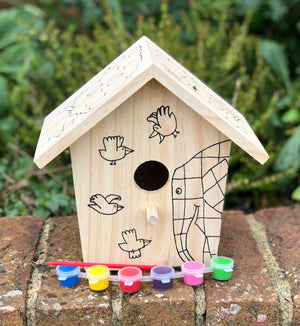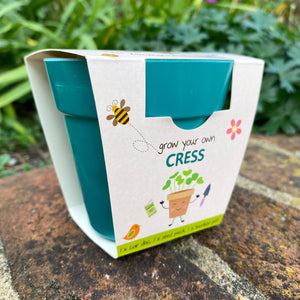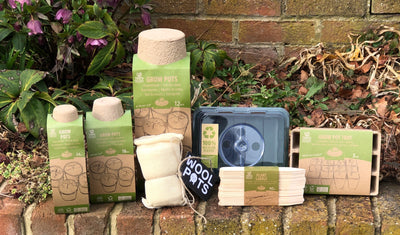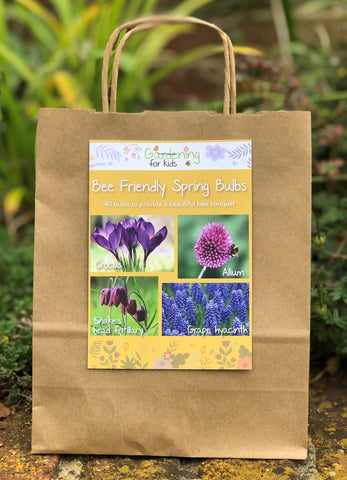
Brilliant Bulbs! Why bulbs are great for children to grow

We are all familiar with the wonderful spring displays of daffodils, tulips and crocuses which brighten gardens in the spring, heralding the start of longer days and warmer weather. Many spring-flowering bulbs also provide much-needed nectar for early bees, such as those bee-friendly bulbs designed by us.
Where are bulbs from?
Although bulbs are now associated with The Netherlands, which is a major grower and exporter, neither daffodils nor tulips originated there. Tulips are native to Turkey, and the name ‘tulip’ is derived from the Turkish word for ‘turban’. Tulips were brought to The Netherlands in the 16th century and their popularity grew, particularly those with speckled petals. ‘Tulipmania’, between 1636 and 1637, saw prices for single bulbs of these prized varieties change hands for the equivalent of thousands of pounds in today’s money. The speckling was later found to the result of viral infections of the bulbs. Daffodils originated in Spain and Portugal and were introduced into Britain by the Romans who mistakenly believed they had medicinal properties.
What's inside a bulb?
How many of us have ever stopped to think about the bulbs that give rise to such flowers? Bulbs are amazing miniature packages containing a miniature plant, all ready to burst out when weather conditions are right.
Bulbs consist of a papery outer layer, which protects the softer, fleshy scales underneath. The soft scales are stores of energy to sustain the growing plant until it has green leaves of its own to photosynthesise. In the centre of the bulb, underneath the scales, is the tiny plant consisting of the miniature flower and leaf buds. At the base of the bulb is the basal stem, from which the roots grow.
 Picture from journeynorth.org
Picture from journeynorth.org
After flowering, the leaves of flowering bulbs should be allowed to die back naturally. Sugar made in the leaves during photosynthesis is transported to the bulbs and stored as starch, an energy source to nourish next year’s flowers. Bulbs remain dormant over the cold winter months until warmer spring temperatures trigger biochemical process in the bulb which initiate growth. Bulbs intended for indoor flowering still need this period of chilling for several weeks.
Why are bulbs great for children to grow?
October half term can be a little tricky to plan in terms of growing, as it's completely out of season for sowing most 'traditional' plants. However, some bulbs need a cold spell to germinate, meaning the early spring bulbs will need to be planted in the autumn. So, alongside wildflowers, they make an excellent half-term activity. Flowering in the early spring, they teach children about patience, seasons and life cycles.
As well, most bulbs are larger than seeds, meaning that they're easy for small hands to pick up and place. There's also the fun factor: digging is required!
Most importantly, they're easy to grow, meaning that there's unlikely to be any failed attempts, which may cause disappointment. No gardening expertise required! Just pop them in the ground and wait.
Check out our Bee-Friendly Spring Bulbs for 40 spring-flowering bulbs that the bees will love.





Leave a comment